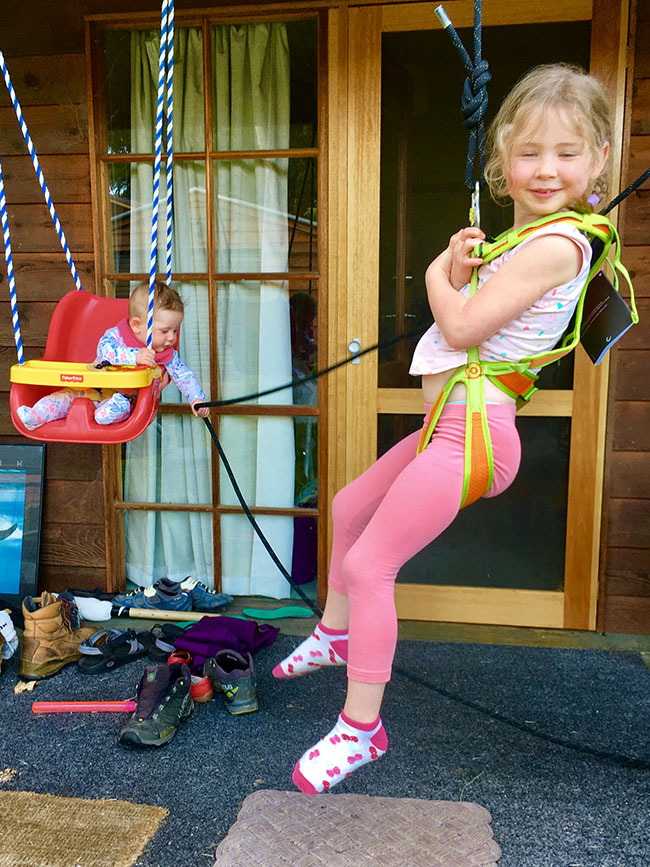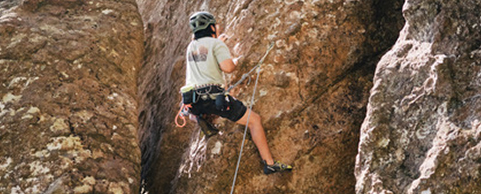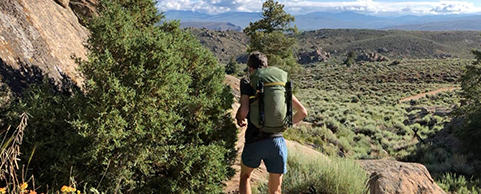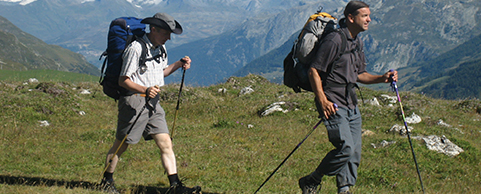Climbing Harnesses for Kids

Choosing a harness for your child can be a daunting process. Especially if you're unfamiliar with the options – both in terms of products and set-ups – that are available to you.
Recently, I've been asked by many parents about kids’ harnesses and, in particular, harnesses for small children. So I decided to write an article with my thoughts, here.
What's Important
There are two main things you need from a kid's climbing harness.
- It needs to stop the child from going upside down.
- Your child shouldn't be able to fall out of the harness. (This sounds like a no-brainer, but the thing to bear in mind is that small children have hips that aren't pronounced enough to stop a harness from sliding off when upside down.)
The Set-up Options
The way I see it, there are two choices:
- Full-body harnesses (e.g. Edelrid Fraggle II).
- Sit harness and a chest harness combination (e.g. Edelrid Finn and Petzl Body Children's Chest Harness).
Which Option Should You Choose?
Whether you use a full-body harness or the combination of a sit harness and chest harness, you'll get the same outcome: a set-up that stops your child from going upside down, and a set-up that stops your child from falling out of the harness.
So, why would you choose one option over the other?
It depends on a few things:
- What your child will tolerate. Some kids hate full-body harnesses; some hate the clutter of two separate harness components. Likewise, some kids hate the tie-in knot in their face; it doesn't really bother others.
- What fits. For instance, if you have a very young child, you might not be able to find a sit harness that's small enough.
- How compentent you are at tying your child into the sit harness + chest harness combination. (I'll explain how I do that below.)

Option 1: Kid's Full-body Climbing Harness
For young children, full-body harnesses are the most common choice.
Tying In (Single-attachment Method):
Tying into a full-body harness is pretty simple. There's one central attachment point, so you'll be passing the rope or carabiner through this point (see Photo 1 and Photo 2).
Tying In (Double-attachment Method):
If you're climbing at a gym that requires being attached to the rope at two points (e.g. two locking carabiners, or a combination of a tie-in knot and a back-up locking carabiner), tying into a full-body harness remains simple. You'll be passing both the rope and carabiner (or both carabiners – whatever the particular set-up at your gym is) through the same central attachment point. Easy.
Advantages:
- The harness is one unit.
- There's one attachment point, which makes tying or clipping into the harness idiot-proof.
- Same attachment point whether you use the single- or double-attachment method.
- Easy to put on.
Disadvantages:
- The attachment point is usually around sternum height. This means that the knot or carabiner you use to attach the harness to the rope can end up in your child's face. (And, personally, there's no way I would enjoy climbing with a knot or carabiner in my face, therefore I can't bring myself to ask my child to climb with these in her face!)

Option 2: Sit Harness + Chest Harness
This two-piece set-up requires both a traditional sit harness plus a chest harness. (This is the set-up I've bought for my daughter.)
Tying in (Single-attachment Method):
There are several ways you could do this. Here's what I do: I thread the rope down through the chest harness attachment points (see Photo 3), then tie-in to the sit harness as per normal.
Tying in (Double-attachment Method):
Here's what I do: I get a 30cm sling and lark's foot / girth hitch it to the sit harness' belay loop. Then, I thread this sling through the chest harness attachment points and clip-in there (see Photo 4).
The downside to this configuration is that the knot/carabiners sit in your child's face (like it does with the full-body harness set-up).
Advantages:
- Using the single-attachment method, the tie-in knot is low and out of your child's face.
- When the child is older, you can ditch the chest harness and you won't necessarily need to buy a new harness, because you'll already have a sit harness.
- The child will become accustomed to a sit harness from the start.
Disadvantages:
- Using the double-attachment method is a bit fiddly.
There you have it. Climbing harness options for kids, and the advantages and disadvantages for each.

Written by HP Gluck,
Bogong Equipment assistant manager.
See our range of rock climbing harnesses.
Need help choosing a kid's harness? Visit us, email us or call us (03 9600 0599).
More Articles
- HOW TO CHOOSE A HARNESS FOR ROCK CLIMBING
- WHICH CLIMBING ROPE SHOULD I BUY?
- ROCK CLIMBING TERMINOLOGY: A GLOSSARY
- MORE RESOURCES...


















